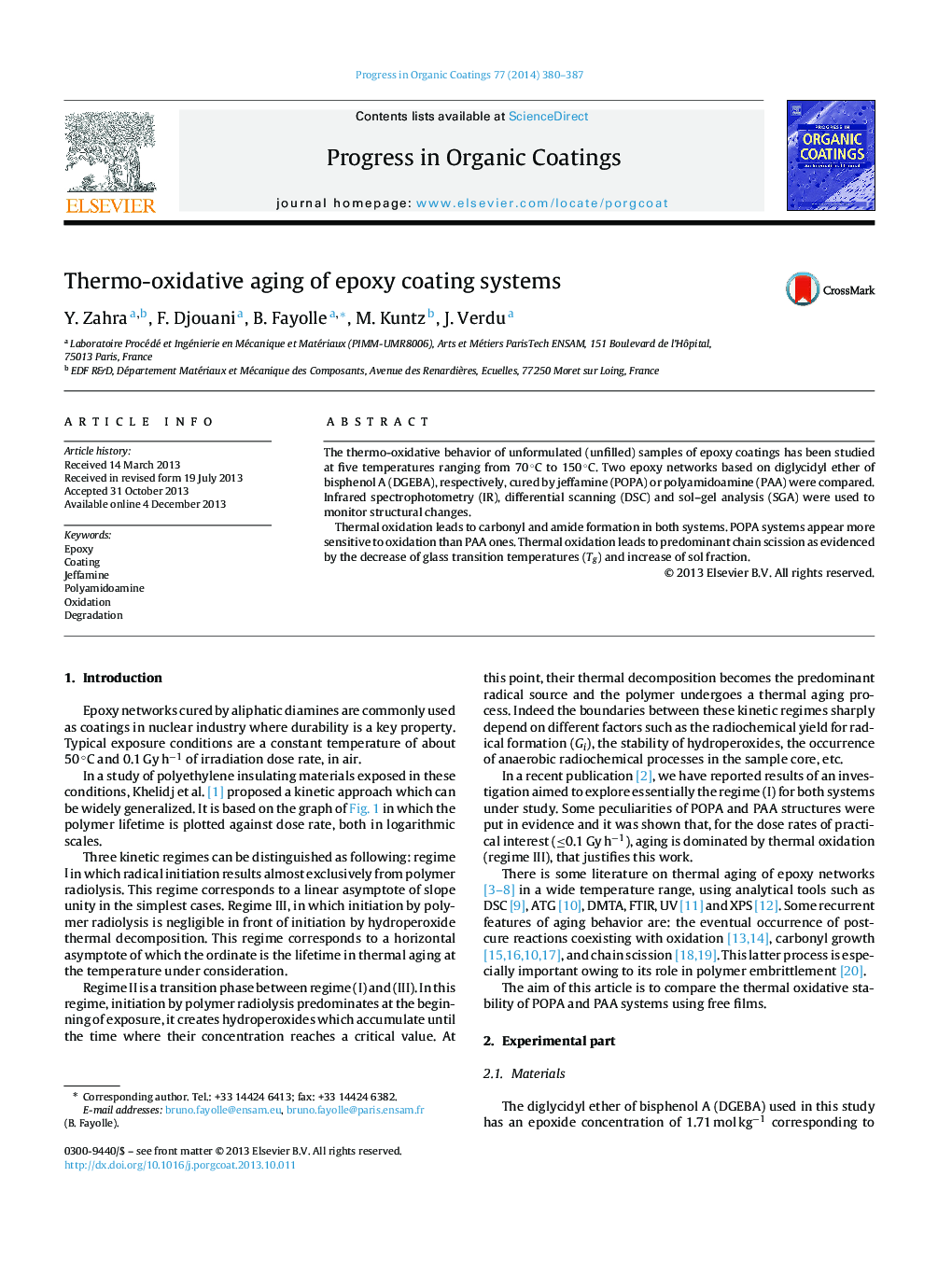| Article ID | Journal | Published Year | Pages | File Type |
|---|---|---|---|---|
| 692755 | Progress in Organic Coatings | 2014 | 8 Pages |
•Oxidation of two epoxy coatings leads to carbonyl and amide formation.•Jeffamine systems appear more sensitive to oxidation than polyamidoamine ones.•Thermal oxidation leads to predominant chain scission.
The thermo-oxidative behavior of unformulated (unfilled) samples of epoxy coatings has been studied at five temperatures ranging from 70 °C to 150 °C. Two epoxy networks based on diglycidyl ether of bisphenol A (DGEBA), respectively, cured by jeffamine (POPA) or polyamidoamine (PAA) were compared. Infrared spectrophotometry (IR), differential scanning (DSC) and sol–gel analysis (SGA) were used to monitor structural changes.Thermal oxidation leads to carbonyl and amide formation in both systems. POPA systems appear more sensitive to oxidation than PAA ones. Thermal oxidation leads to predominant chain scission as evidenced by the decrease of glass transition temperatures (Tg) and increase of sol fraction.
